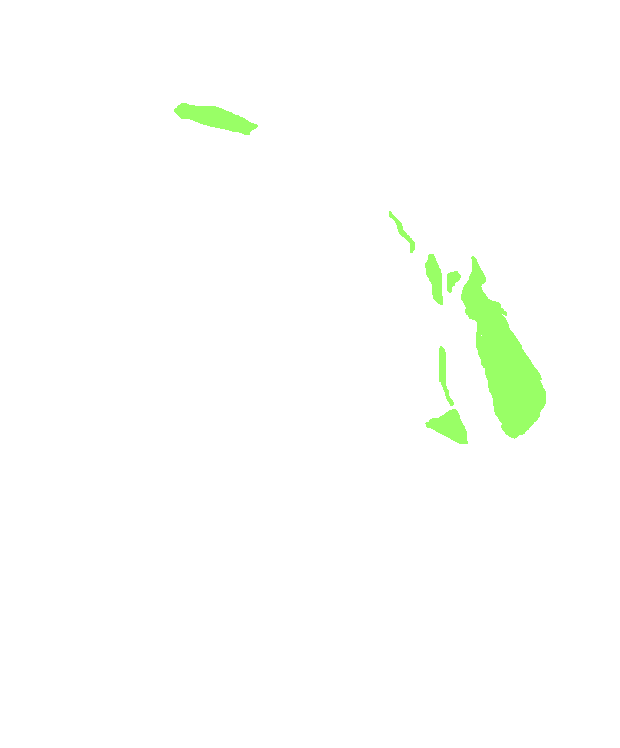The reserve is about 60ha (148 acres). Below is a short guide to the different parts and to some of the flora and fauna you may find there. The guide is drawn heavily from the management plan by Rupert Higgins of the Wessex Ecological Consultancy and from Sharon Ubank's book "Landscapes of the Past", available from the Town Council.
There is also an orienteering trail on the reserve.
Place mouse over one of the above items to see details here.
Entering the reserve
The pedestrian entrances to the reserve are shown on the map and are located in the following places:
Near the roundabout where Bowsland Way meets Bradley Stoke Way;
Just off Campion Drive near where Primrose Bridge crosses Bradley Stoke Way;
On the footpath off Ellicks Close;
On Bradley Stoke Way opposite Tescos Extra;
On the footpath off Ormand's Close;
Just off the footpath around the secondary school field as it passes the leisure centre;
There are two footpaths down to the reserve from Juniper Way;
On Bradley Stoke Way between the Town Centre and Webb's Wood Road at the point where the bridge goes over the Stoke Brook;
Near Diana Gardens;
Near Sherbourne Avenue and The Coppice;
Off Brake Close;
At the roundabout where Braydon Avenue meets Brook Way;
At the roundabout where Brook Way meets Bailey's Court Road.
Woodlands
The reserve contains three wooded areas - Webb's Wood, Savage's Wood and Sherbourne's Brake - each with its own distinct character. From the middle ages to 1915, the site of the nature reserve was part of the Berkeley (later Beaufort) estate, and an estate map of 1725 shows Webbs Wood although not the other areas. Savage's Wood and Sherbourne's Brake were probably planted in the late 18th century when commons were enclosed.
Webb's Wood
Webb's Wood is the oldest wood on the reserve; its exact age is not known but the diversity of species within it indicate that it may be ancient. It was probably used during the 18th and 19th centuries as a source of oak bark for tanning and for hazel coppice. It once stood on farmland owned by the Webb family, hence the name.
In contrast to Savage's Wood, its canopy - of oak and ash - is relatively sparse whereas its "understorey" of hazel, hawthorn and field maple is well developed and provides valuable habitat for small songbirds. There are however some fine mature tree specimens, including a massive ash tree in the middle of the wood. In spring the ground flora includes bluebells, wood anemones, yellow archangels and celandines.
Savage's Wood
We are not sure how this wood got its name, although it used to be called "Savers" on old maps.
Savage's Wood is our largest patch of woodland. The earliest record we have of it is on the Ordnance Survey map of 1880. However, the species found in the wood suggests that parts of the wood, at least, are probably much older than that. Look out for a big mature oak with spreading branches. It is unusual for an oak in a wood to spread out like this so it is possible that it once stood on its own in a field or common and that the wood grew up around it.
The wood is dominated by oak and ash, but also features a number of plantations of particular species that were used for timber. These include stands of beech, hornbeam, wych elm, hazel (which the conservation group is coppicing) and alder. There is also a group of wild cherries planted in the 1950s.
Savage's Wood has plenty of mature tall trees but a relatively sparse "understorey", that is, shorter, bushy plants at a lower level. However, this means that ground-level plants flourish in the light and space. In the spring we have wonderful displays of bluebells (particularly in the coppiced areas) as well as wood anemones, dog's mercury and celandine.
Savage's Wood contains a lot of standing dead wood, a valuable habitat for woodpeckers seeking insects and grubs within the decaying trunks - look out for the distinctive round holes that they make.
When Bradley Stoke Way was constructed it went through one end of the wood - you can see a remnant in the corner of Tesco's car park next to the road. The younger trees to the north of the wood were planted in compensation.
Sherbourne's Brake
Sherbourne's Brake is about 200 years old and was probably originally planted as game cover. However, its ground flora indicates that the wood may be older than this. Sharon Ubank suggests that it has grown up from a copse visible on old maps. She also has a theory for its name - it seems that Harry Sherbourne, a nephew of the farming family who owned the land, was living with them at the time of the 1851 census. Sharon suggests that the Brake may even have been planted in his honour.
This wood is also dominated by oak and ash, with the addition of crack willows close to the brook. More unusual are the non-native turkey oaks at the wood's summit - in autumn these are easily distinguishable from English oak by the bristly acorn cups - and a number of black poplars. The original poplar which seeded these was felled long ago and its slowly decaying trunk still lies next to the path.
Community Orchard
Planted in 2007 the Community Orchard is the newest addition to the woodlands on the reserve.
Hedgerows
The hedges that run through the reserve and through the rest of Bradley Stoke are valuable "wildlife corridors", helping small birds and mammals move between wooded areas. Many of these are the remnants of old field boundary hedges and some are ancient, most notably the "Saxon hedge". This runs on a line between Stoke Gifford and Patchway Common and is thought to be 900 years old. Our hedges mostly contain hazel, hawthorn and blackthorn, and include some of our oldest trees.
The Brooks And The Lake
The brooks after which the reserve is named are the Stoke, Hortham and Patchway brooks. Hortham Brook runs from the north under the M4 and soon flows into Patchway Brook. Patchway Brook and Stoke Brook join at the Three Brooks lake and the combined waters flow out of the lake as Bradley Brook.
The lake and brooks contain several native water-plants such as reeds, bulrush and yellow flag. In summer however you are most likely to notice the pink and white clouds of Himalayan balsam along the banks. This was introduced to the UK as a garden plant by the Victorians, and while very pretty it is also unfortunately very invasive; uprooting these is part of the management plan for the reserve.
During winter and spring the reserve's wetlands are augmented by standing pools of water near the lake and in ditches by the woods. Tadpoles wriggle in these in the spring and sometimes smooth newts are spotted. However, these ponds' temporary nature means that they make a precarious breeding habitat. Two purpose-built ponds have been created in the reserve in the grassland to the north of Savages Wood - one near the wood's entrance, the other next to the road opposite Tesco. Next to both of these are piles of wood and soil which, it is hoped, will become habitats for newts. Tadpoles and dragonflies have already been seen at these new ponds and more wildlife should arrive as they mature.
Three Brooks Lake
The lake itself is not a natural feature but was created following the construction of a huge relief sewer in the area. This left a huge crater of which the lake is the remnant, filled by damming the confluence of the brooks. The lake is popular with residents and can be very busy at fine weekends when several duck-feeding expeditions converge on it!
The lake is a special place for wetland birds and other wildlife and plants. Its primary purpose is to provide amenity benefit and environmental interest.
During the autumn/winter the water level within the lake will be reduced by manual adjustment of the outlet control conveying flow into the downstream watercourse.
This operation is to provide flood storage within the lake in the event of extreme rainfall occurrence and resultant high brook flows.
This procedure is intended to reduce flood risk locally and within the downstream catchment area. These actions have been agreed by the Environment Agency.
The lake and surrounding brooks are a natural habitat to a wide range of wetland birds including kingfisher, water rail, little grebe, mute swan and heron, indicating that the local environment can support these species.
Patchway Brook
Patchway Brook runs from the north-west and is soon joined from the north by Hortham Brook. The combined waters pass Savage's Wood as Patchway Brook and flow into the Three Brooks Lake.
Bradley Brook
Bradley Brooks flows eastwards out of the Three Brooks Lake and under the M4 motorway.
Stoke Brook
Stoke Brook runs from the south-west through Sherbourne's Brake, past Webb's Wood and flows into the Three Brooks Lake. If you are lucky you may see a kingfisher where the brook flows through Sherbourne's Brake.
The Tump and the Grasslands
"Tump" is a 16th-century word meaning "hillock" or "mound". Rising up from the lakeside, our Tump is rather more modern, having been created using the spoil left over from creating the second Severn bridge crossing. The Tump, the banks of the new secondary school, the area to the north of Savage's Wood and the verges next to the reserve paths all contribute to the reserve's grassland habitat.
The grasslands are probably not the most interesting part of the reserve to the casual visitor, who will hurry past them towards the lake or the woods. However, they host a huge variety of wildflowers. A full list is given in the management plan so we only note a few here.
Reflecting the area's farming past, many of the wildflowers are plants typically found on arable land and have responded to soil disturbance, particularly following the construction of the new school. These include broad-leaved spurge - a nationally scarce species - and scarlet pimpernel.
On the sides of the Tump you may find the pretty yellow bird's-foot trefoil and pink sainfoin. Sainfoin literally means "wholesome hay" in French, reflecting its use as a fodder plant.
Harder to spot is grass vetchling, a plant that looks exactly like a blade of grass until its cerise flowers, like miniature sweet peas, come out. It is listed as an Avon Notable Species. Its relative, the purple common vetch, is easier to pick out, with slender leaflets.
The Marsh
The marsh is a small area of boggy wetland, the only example of such a habitat on the reserve, so it is particularly valuable. Thick clumps of bulrushes grow here and it is home to a large population of freshwater shrimp. The conservation group and Green Gym are maintaining the marsh by digging irrigation channels and removing invasive species such as Himalayan balsam.




























